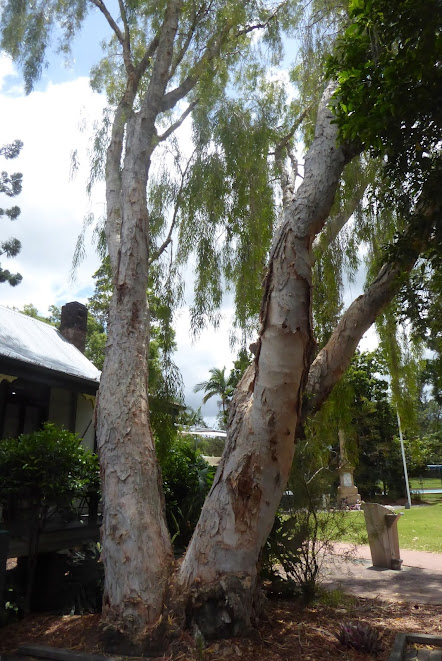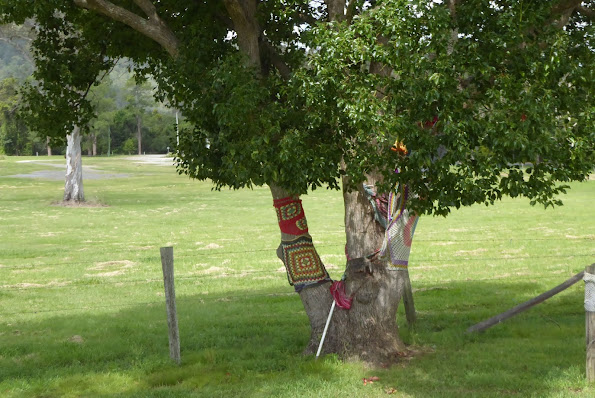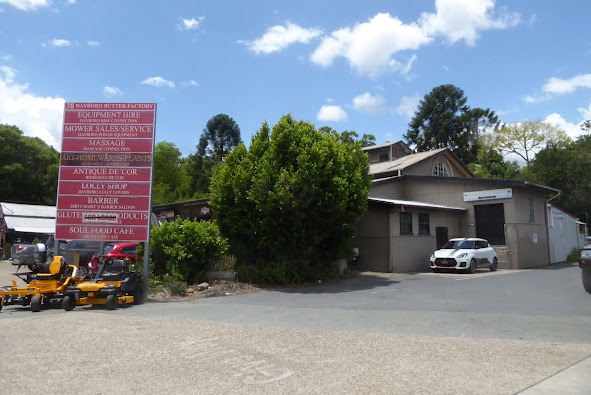By early 1890's the town consisted of a general store and a hotel, nearby sawmill, and by 1903 a butter factory. Being a largely agricultural area, in 1915 the residents wanted the extension of the railway from Enoggera to Terrors Creek in order to facilitate the transporting of goods and passengers to Brisbane. The town in 1915 listed as having a butter factory, sawmill, bank, several stores, hotel, and a public hall.
We parked in front of the bakery on William Street, near the site of the railway. We were at the corner of Railway and William Streets and headed right (east) along William Street. First stop was the old butter factory.
The Silverwood Butter Factory was built in 1903 on the site of the old Terrors Creek Creamery. It was damaged by fire and restored in 1989. It closed in 1967 and fell into disrepair until 2014/5 when it was restored and now houses many unique stores.
The floors were made of Australian beech trees, which have shrunk over time. The roof was originally a shingle roof, and was replaced over time by the iron roof seen today. The workers cottage was originally located about 5km away at Rush Creek, and relocated to here in July 1989 by the Dayboro Lions Club and the then Pine Rivers Shire Council. Today it is an arts and craft centre with some beautiful hand made goods.
Long later also purchased the slaughter yard in 1928. Long built a new butcher shop in 1933. The shop has changed hands many times since then.
At the top of William Street in McKenzie Street is the Crown Hotel. James Kirkead Berry built the first store in town in January 1887 using bricks from the old sugar mill. This store became the first unofficial post office. He was granted a provisional hotel license and he ran the Crown hotel from his home and store. In 1913 the
hotel and land was sold to Francis James Thomson Hepburn who built
the present day two story hotel next door. The property of over 61 acres was purchased by Thomas Joseph Delaney and his wife Teresa Josephine (nee Cruice) in 1921. The property was sub-divided and the Delaneys kept ownership of two acres including the hotel. The hotel was sold to Castlemaine in 1936 and then sold to the Henzell family in the 1990's.
... and the old post office.
The old Pine Rivers Shire Council building was built about 1900 by Wilhelm and Christoph Riek and the building was known as Riek Bros. Store. They operated with their sister Annie until they sold the store to Silverwood Dairy Factory in 1907. The building was extended when a branch the English, Scottish & Australian Bank Limited was opened in 1912. It was further extended to the footpath in 1936. The building was taken over by the council in 1998.
We were then at our lunch venue, The Old Storehouse.
The streets and roads are named in honor of the early settlers. That's a story for another time. Maybe we will discover more.




















No comments:
Post a Comment